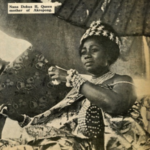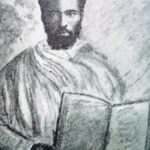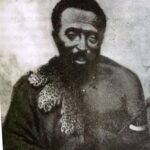ZARE’A, YA’EQOB
- 3 Min Read
Zare’a Ya’eqob (circa 1399-1468) emperor of Ethiopia from 1434-68, was the greatest of the emperors in medieval Ethiopian history. He was noted for his re-organisation of the government, literary achievements, piety, and social reform. His period was also noted for the beginnings of the first contacts with Christian Europe.
The fourth son of Emperor Dawit [reigned 1380-1412] and of Queen Egzi Kabra, he was born at Telq, Fatajar, in what is now Shawa. On his accession to the throne, he found a nation torn by internal strife and the struggle with Islam. He realised the political significance of forming an alliance with Christian Europe in order to counteract subversive Islamic influences. Around 1439-1441, therefore, he sent ecclesiastical delegates to the Council of Florence (1431-45). Fortunately for him, Ethiopia had by then come to the attention of Europe, and as a result of the arrival of the delegates, Fra Mauro, the Venetian cartographer, made a hypothetical map of Ethiopia in 1457. But Zare’a Ya’eqob still had to face an uprising of Muslims at home.
When Badlay in Sadad Din, better known as Arwe Badlay, the sultan of Adal, invaded the province of Dwaro (now Arusi province) in 1445, he had to crush him. Zare’a Ya’eqob’s political ability was made more manifest in internal affairs. He firmly established direct control of the government by re-organising the offices of the Tsahafe Lam (a title given the governors of Amhara, Damot, and Shawa), the Baher Nagash (‘”Ruler of the Sea,” that is, governor of Eritrea and northern Tegre), and the Aqabe Saat (“Guardian of the Hour,” the highest ecclesiastical post at court), through which he controlled the provinces. He also created the offices of the Ras Masere and the Adak-shat (officers of the royal household).
In addition, he took control of the army and of the finances, which his predecessor Yeshaq, had organised with the help of a foreigner, but which had apparently fallen into chaos on his death. He showed no mercy to the disobedient, and even had his own rebellious wife, Tseyon Mogassa, fatally flogged, because she wished to enthrone her son. He also defeated Mahiko, the Gerad (governor) of Hadeya, in what is now Kaffa province, who had rebelled. His stern handling of rebels contributed to the stability of his government.
His outstanding achievements appear to have been his religious reforms and policy. He enforced the conversion of the pagan peoples of Damot and Agaw Meder, and tried to suppress idolaters, even to the extent of inflicting capital punishment on his own daughters and sons. He also established church rules and regulations, including holy days and fast days. But the great theological disputes in the Ethiopian Church began during his reign, apparently because of the interest in dogmas and creeds which he encouraged.
He established many churches and monasteries, the most famous being that of Dabra Metmag, at Tagulat in Shawa, built in 1441 to commemorate the Egyptian monastery of the same name which the Muslims had destroyed. The church and palace at his last capital, Dabra Berehan, were his most magnificent buildings.
His successful reign was marked by his own religious writings, which represented an exceptional feat for an Ethiopian emperor, and by his encouragement to those with literary interests. He himself wrote one hymn and six books, among which were the Matshafa Meelad, which dealt with Jews and Stephanite heretics, and the Tsalota Haymanot, or Credo, which explained the creed of the Ethiopian Church. He encouraged translations of religious works, and even of occult literature, which was introduced into Ethiopia during his reign.
TSEHAI BERHANE SELASSIE





